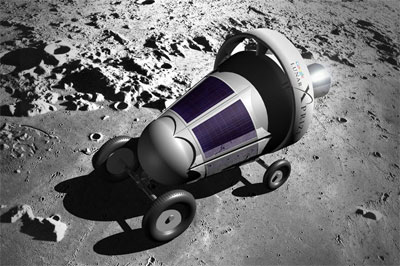How do we get young Canadians to reach for the stars?by Sumitra Rajagopalan
|
| Now is the time for the CSA to embrace an out-of-the-box Canadian vision for lunar and planetary exploration—one that would engage younger, technologically savvy Canadians by turning them into participants. |
Back then, at the height of the Cold War, the public was easy to engage. The narrative was simple: two superpower adversaries—the freedom-loving, technologically advanced US against the totalitarian, ostensibly backward Soviet Union—in a battle for space supremacy. Each side cheered for the home team.
Then the Cold War ended. Without an adversary or a clear endgame, the US space agency soon found itself pulled in all directions by competing priorities. Rather than using the Apollo success as a stepping-stone to exploring other planets, the Americans (and Russians) abandoned the Moon and spent the next four decades, literally, going around and around Earth.
Even as NASA rushes to implement George W. Bush’s goal of sending American astronauts back to the moon by 2020, energy and enthusiasm are on the wane, what with tightening budgets, missed milestones, an ambivalent new president, and an increasingly jaded public.
Yet, as Americans contemplate their next steps, the race is heating up.
China is shaping up to be the new Soviet Union. There is no price tag too steep for the Chinese to showcase their prowess. Armed with unbridled state support and Soviet-inspired technologies, the Chinese have already launched an orbiting lunar probe and are on their way to land their own astronaut on the Moon by 2020. They could well beat the Americans to the finish line. Close on their heels are an emergent India and a resurgent Russia, both with lunar ambitions of their own. It is into this crowded arena that Canada steps.
After years of lobbying, the Canadian Space Agency has received an additional $110 million from Ottawa over the next three years for the development of space robotics and technology—in particular, lunar or Martian rovers. Now is the time for the CSA to embrace an out-of-the-box Canadian vision for lunar and planetary exploration—one that would engage younger, technologically savvy Canadians by turning them into participants.
The initiative could take several forms: How about an armada of micro-rovers deployed to the Moon and operated by enthusiasts across the country? It would tie in nicely with a groundbreaking experiment that Canadian astronaut Robert Thirsk is to undertake in the months ahead aboard the International Space Station, where he will remotely control and drive a robot parked at CSA’s offices near Montreal. Open-source coding could allow participants to program lunar robots in real time, with all the excitement streamed live over the Internet. With a little ingenuity, ground operators could drive the robots to specific sites and scout for certain minerals, perhaps choose a memento from the Moon.
| Like the heroes of Sputnik and Apollo, we need vision and leadership to inspire a new generation to reach for the stars—again. |
And while we would all like to see a Canadian walk on the Moon one day, we can send an emissary in the interim—a plastic “phantom” astronaut with a human shape and lifelike tissues and organs. Strapped into a network of sensors, these phantoms would give us a clear idea of space exploration’s effects on the human body, preparing future astronauts for the journey. Until recently, there were two such phantoms on the exterior and interior of the space station, using Canadian technology, in part, to detect radiation levels in the body.
The CSA could also change how it does business with the space community. Rather than award coveted contracts to the usual troika of space companies, why not involve the Canadian engineering community? This could include the thousands of talented students who have taken on complex space projects and won international awards for their efforts.
The Apollo anniversary is an opportune moment for Moon-bound nations, stalwarts and upstarts alike, to redefine space exploration. Like the heroes of Sputnik and Apollo, we need vision and leadership to inspire a new generation to reach for the stars—again.
